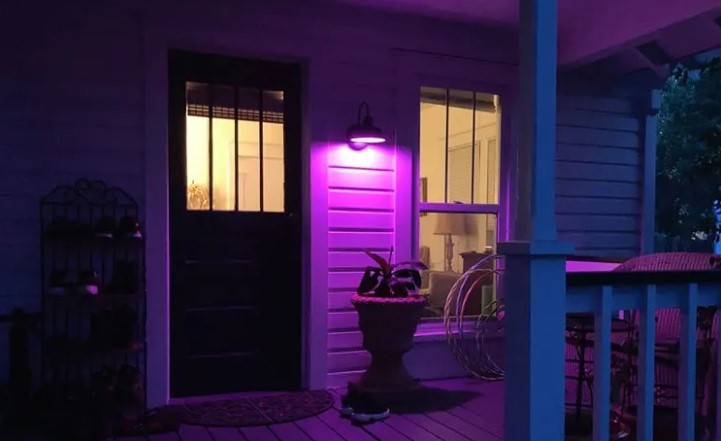A purple porch light may look like a simple decorative choice from a distance, but it carries a much deeper and more powerful meaning. In many communities, that glowing purple light stands as a bold symbol of support for survivors of domestic violence. It is a quiet but strong way of saying, “You’re not alone, and this is a safe place.”

Domestic violence is a serious and widespread issue that affects people from all walks of life. It doesn’t discriminate—it touches the lives of individuals regardless of age, gender, race, or income level. And while most people think of domestic violence as physical harm, it often includes emotional abuse, financial control, verbal threats, and psychological manipulation. The heartbreaking truth is that many victims suffer in silence, either out of fear, shame, or a lack of support. That’s why something as simple as a purple porch light can make a world of difference. It’s a visible sign that someone in the home or community cares. It tells survivors that they are seen, believed, and valued.
But why purple? The color purple has long been associated with courage, honor, survival, and strength—qualities that perfectly reflect the experience of those who have lived through abuse. It represents the bravery it takes to seek help, to speak out, or simply to survive. It’s not just a color; it’s a symbol of solidarity and a tribute to the resilience of those who have endured more than most people can imagine. When a homeowner chooses to light their porch with purple, it can spark curiosity and important conversations. People driving or walking by may wonder about its meaning, look it up, and begin to understand the issue on a deeper level. In this way, a single purple light can raise awareness throughout an entire neighborhood. It reminds us that domestic violence often happens behind closed doors and is easy to overlook.
These lights serve as a gentle yet powerful reminder to stay alert, be compassionate, and never assume someone’s home life is as peaceful as it appears on the surface. However, while the symbolism is powerful, a purple porch light is just the beginning. True support for domestic violence survivors requires more than gestures. It means being informed, sharing resources, and offering a listening ear without judgment. It means encouraging someone who’s suffering to seek help and supporting them through that process. Offering rides, connecting them with support organizations, or even just being available to talk can make a huge impact. On a broader level, support also includes advocating for laws and programs that protect victims and hold abusers accountable. But perhaps just as important as supporting survivors is working to prevent abuse in the first place.
Prevention starts with education—teaching kids and teens about healthy relationships, mutual respect, and boundaries. It means challenging toxic cultural messages that normalize control, violence, or emotional manipulation in relationships. Prevention also involves speaking up when we see red flags, supporting friends or loved ones who might be at risk, and refusing to stay silent when abuse is suspected. Holding abusers accountable and not turning a blind eye helps break the cycle before it starts. The truth is, a purple porch light may not solve every problem, but it’s a symbol that invites action. It tells survivors that there are people who care and are ready to help. It tells abusers that the community is watching and will not tolerate harm. It tells the world that healing is possible, and that awareness is the first step toward change. When more homes shine purple, more people are reminded that domestic violence isn’t just a private issue—it’s a community concern. Each light becomes a beacon of hope, a sign of strength, and a call to action. So if you see a purple porch light, or choose to put one up yourself, know that it’s more than just a bulb—it’s a message that says we stand with survivors and believe in a world without violence.





